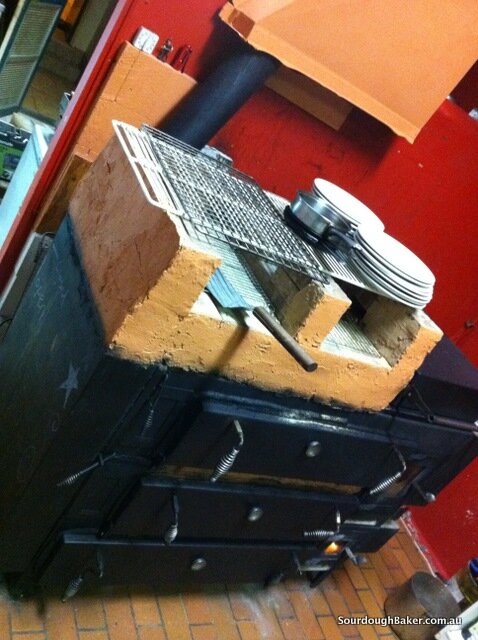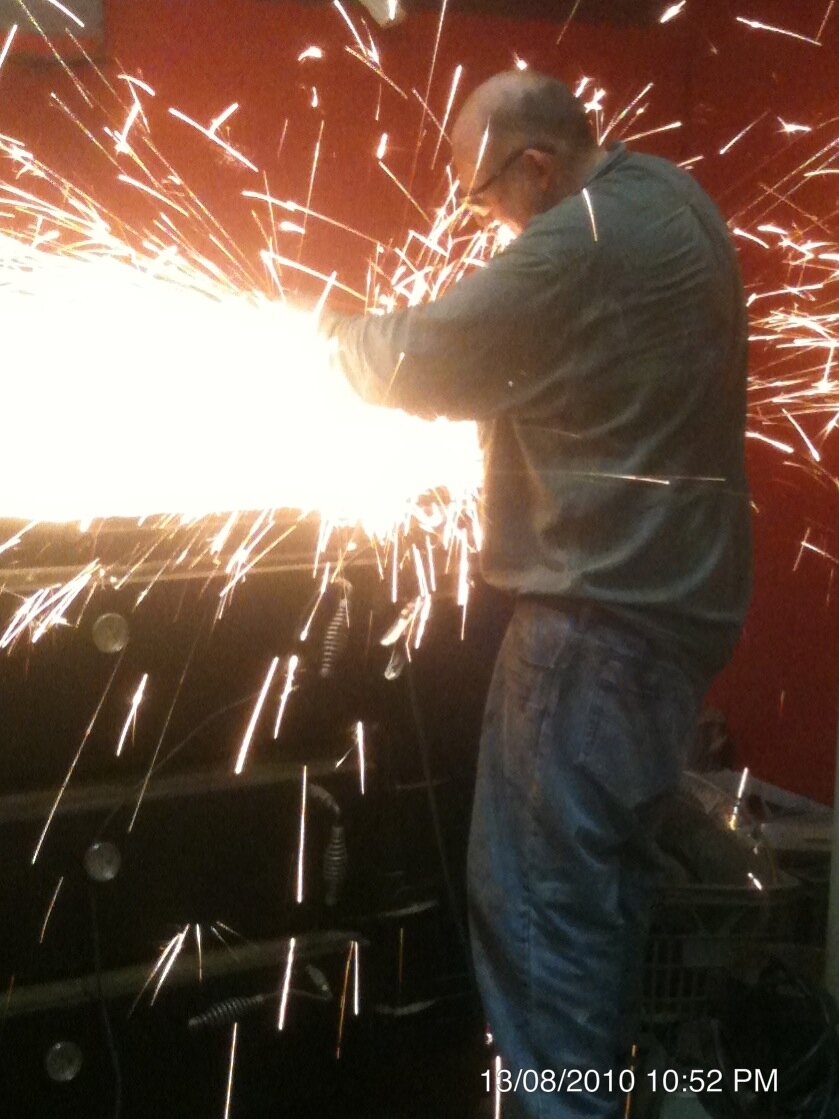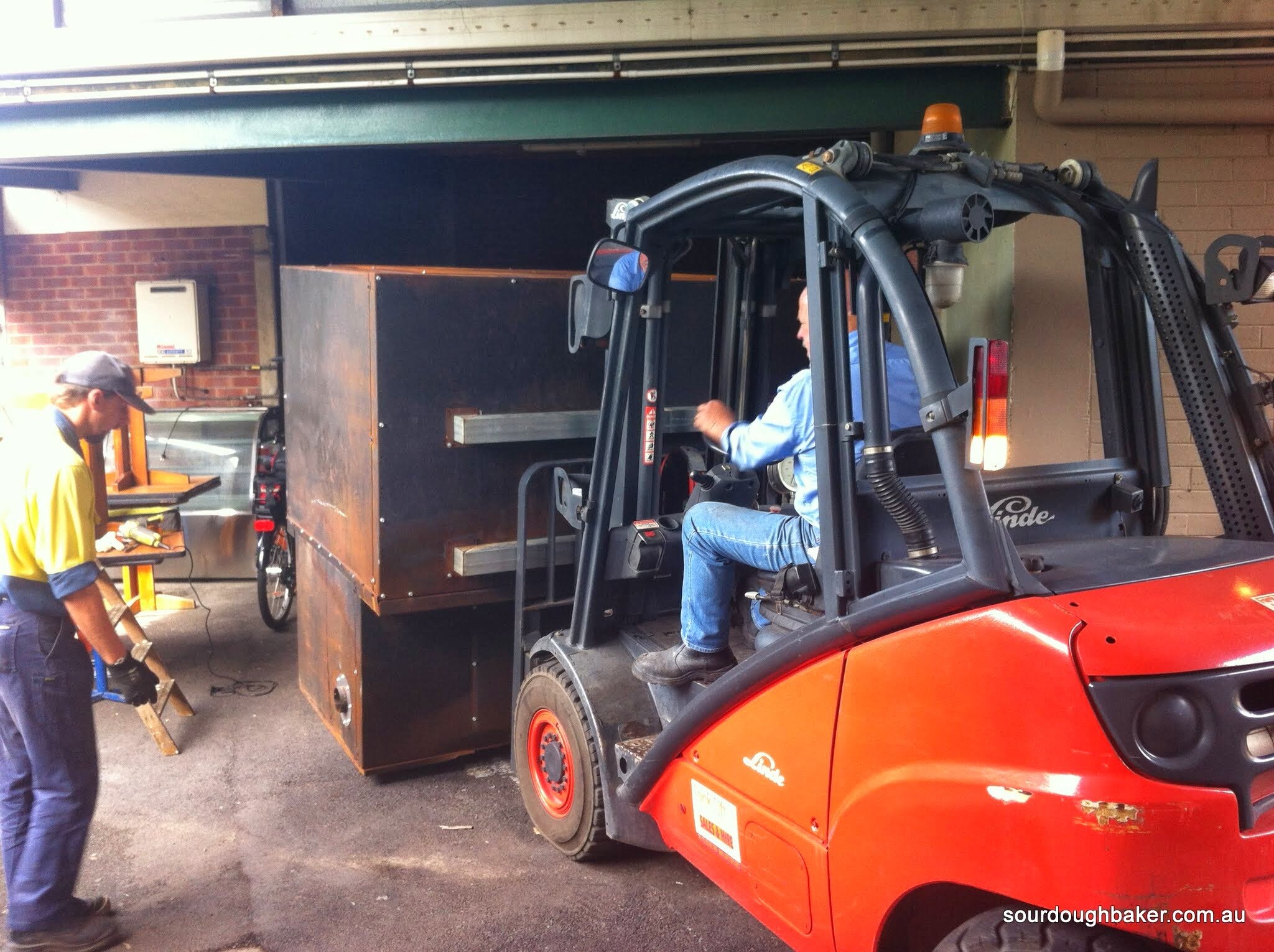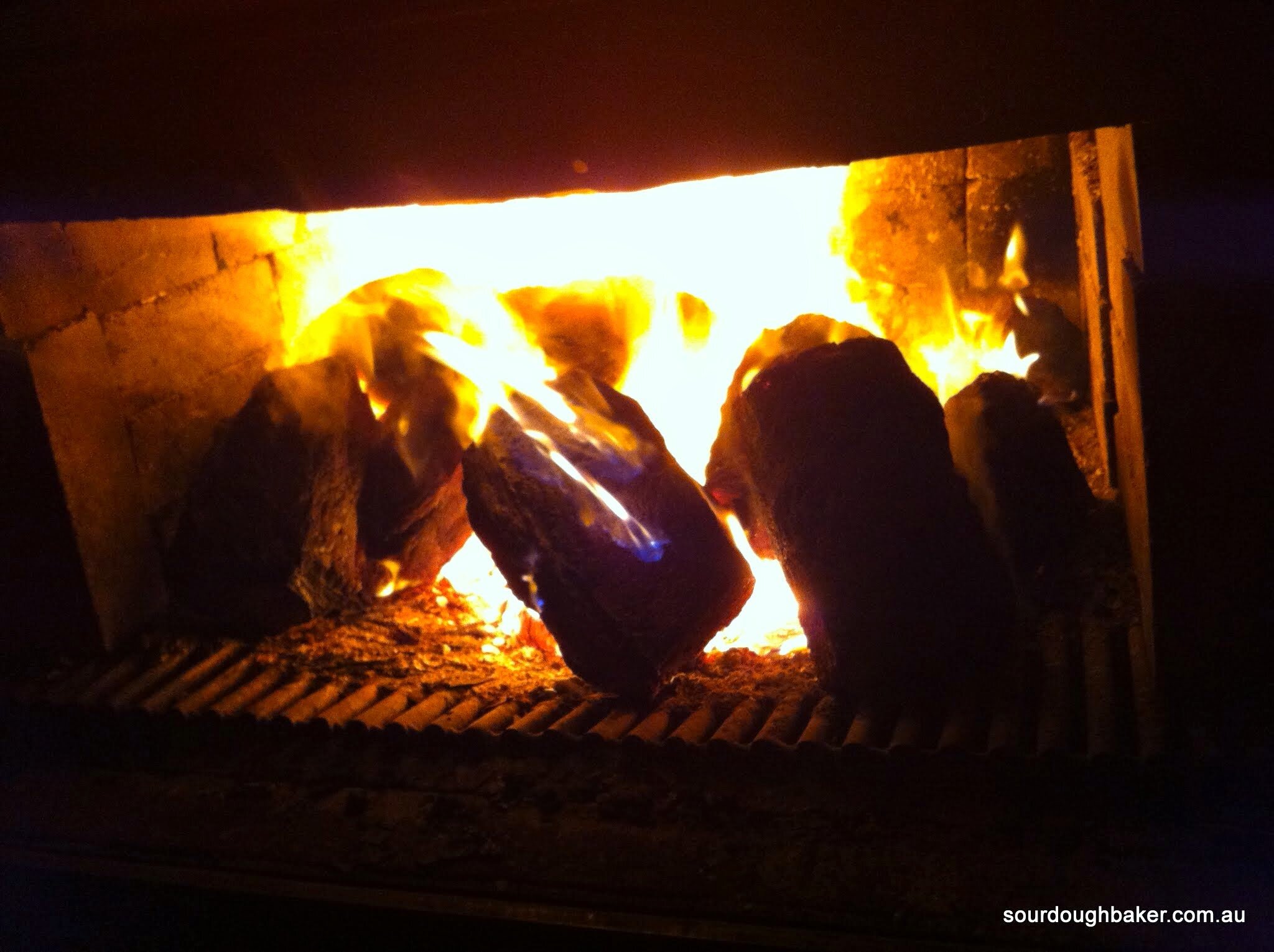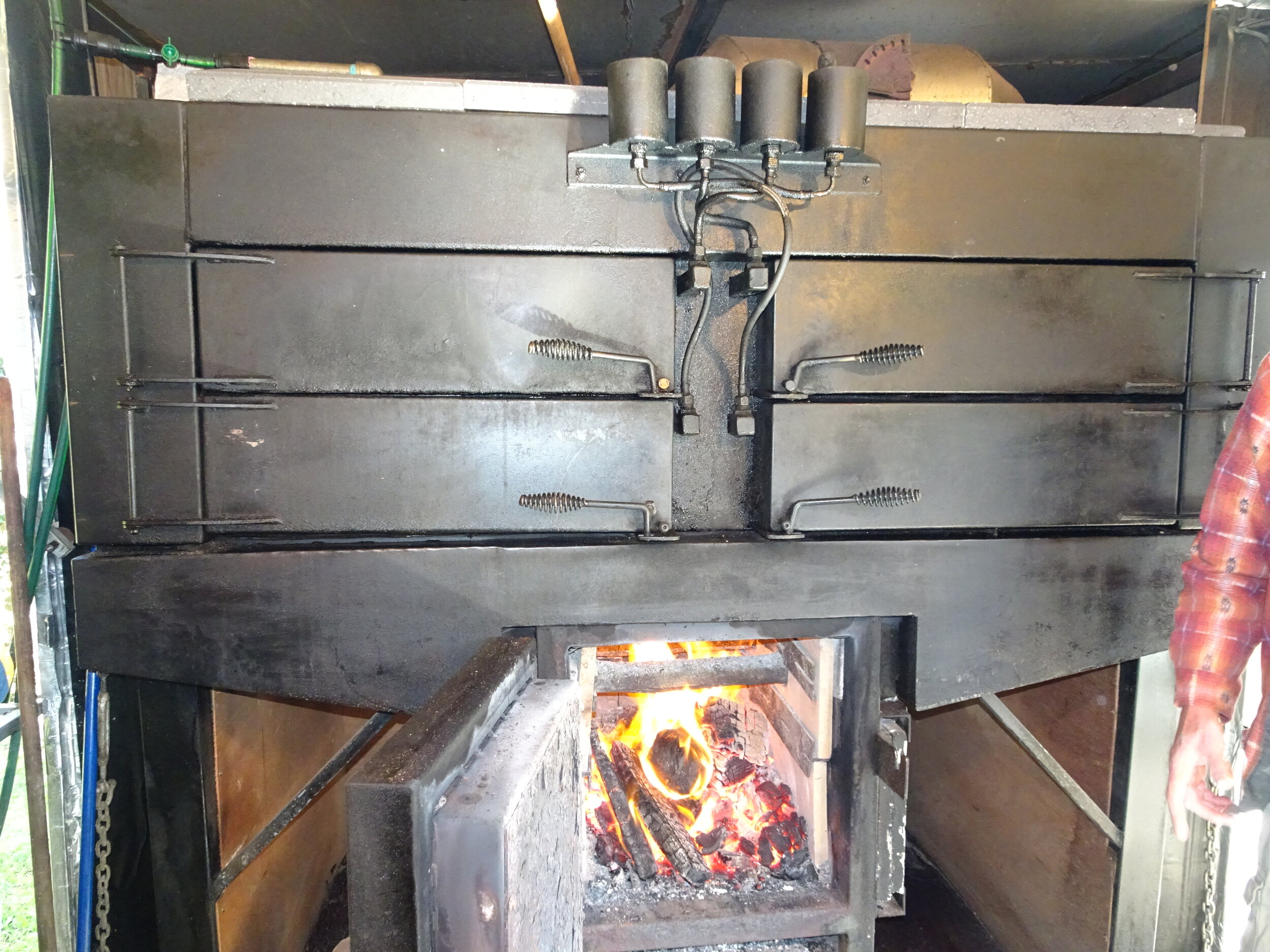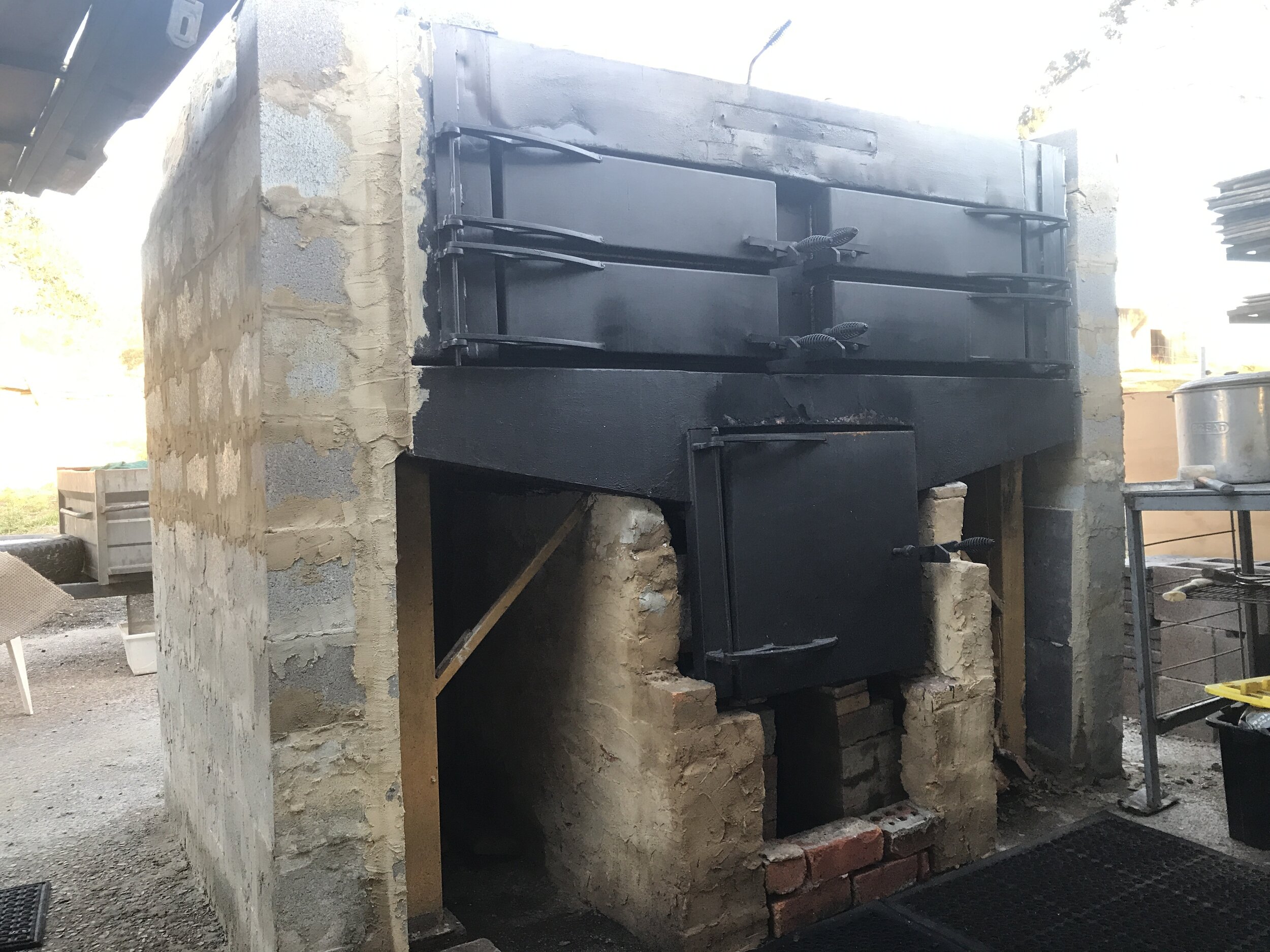The Fires of Hades

I guess it was about 2007 or thereabouts when I was poking around Ebay trying to figure out how I could get my hands on a decent small oven, big enough to bake a few dozen loaves ‘on the sole’. Clearly, this was going to be a budget excercise; I was living in a one bedroom flatette in the backside of Newcastle. My previous bakery had sucked the life (and money) out of me. I was working a regular job now, and hating it.
I had been blogging about my sourdough world while I was ‘between bakeries’, and the feedback I’d been getting made me consider dipping my toes back in the water of the bakery business. I guess I wanted to find out if what I’d been writing about was workable in the real world. I really wanted to reinvent everything I had done so far from a bakery context. This was both from a bakery and business set up perspective.
I was hatching my first version of a Community Supported Bakery - the idea was to create a cooperatively run bakery and commercial kitchen in Newcastle, where like minded foodie folk could start making food and putting it out there. It had to be a low cost setup, because I had bugger all money to play with. I wanted it to be cooperatively run, as I no longer felt I had the juice to carry it on my back after the last bakery almost destroyed me physically, financially and mentally.
That’s when I discovered someone selling wood fired ovens on Ebay. These wood fired ovens differed from other pizza ovens in that they were technically a ‘white’ oven - meaning the fire box was outside the baking chamber. While they were too expensive at that time for my budget, the ovens were roughly the type of thing I was looking for - they were designed for baking pizza on the sole, they had two decks, and heated the baking chambers from outside. From an engineering point of view, this was the same principle as the ‘setter’ ovens I had seen in other bakeries. They baked using thermal mass, rather than the usual element or gas flame which was used to heat a baking chamber.
After ringing the maker and spending an hour or so on the phone with him, I was able to sew the seed of my idea in his brain. I asked him whether he had ever made an oven specifically for bread. His answer has gone down in our personal mythology now. He said ‘It’s basically a hot box. How hard could it be?’
Many years later, after using two or three ‘off the shelf’ ovens, and then extensively modifying them to bake bread, as well as building three serious prototypes, I finally had a proper baker’s oven. This is the story of how I got there.
Bertha One
I designed our first baker’s oven, Bertha, as a kind of multi purpose cafe stovetop and bakery oven. It was like an old Aga, with not one but two fireboxes on one side. The idea was to cook food over the firebox area, and to have the flue gas then flow around the baking chambers. Originally it had 3 baking chambers; it became clear early on that the bottom chamber was next to useless, so it was filled with brick to become a heat bank. The bottom firebox was also largely useless, so brick was also added, and we cut a hole in the top of it to make a single, larger firebox. The door of the firebox was uninsulated, meaning that the chef lost the hairs on their legs while using it. The cooking surface itself was way too hot; it would incinerate bacon in seconds. A stainless steel shelf was added above the firebox, and a layer of firebrick was placed between it and the hotplate. It became workable as a cafe cooktop, though the chef (old mate Paul West, who has gone on to bigger and better things these days!) suffered burning legs to use it. Still no insulation. The baking chambers themselves were hugely uneven - the right side, nearest the firebox, was about 80 degrees hotter than the left. Initially I just rotated the bread like a multi dimensional conveyor belt, starting on the top deck and gradually being rotated in various ways until I finished the bread on the bottom deck. Then I built thicker insulation around the firebox, and added lots of bricks to the top of the baking chambers; now the oven had ‘heat banks’ of brick under, beside and above the baking chambers. We also insulated the firebox door, so Paul stopped complaining about not having any hair left on his legs.
All this modification took many months of trial and mostly error. When I look back at it now, it’s actually amazing that we managed to get any decent bread out of it at all - but we did! I have photos to prove it!
While the oven wasn’t a great one, it was certainly an excellent way to learn about thermal engineering from the ground up. I also learned lots about how wood fired ovens work, and how flue gases travel. Or didn’t travel, as Bertha ended up clogging up the exhaust system of the cafe, leading to a couple of days lost trading while we cleared out all the soot from the ductwork.
Bertha Two
A couple of years later, our cafe moved across the road to a premises owned by a local church organisation. Bertha One became ‘decommissioned’; we took her to the scrap yard when we moved out of the Hunter Street premises.
At our new digs, the cafe and bakery really took off, but I was suffering, as the kitchen only had a couple of old gas ovens which were tiny and very, very slow. It was taking me about ten hours to bake 100 loaves - so a rate of 10 loaves an hour was pretty bloody slow for a big cafe and bakery shop.
We were eagerly awaiting the second coming of Bertha, which we imaginatively called ‘Bertha Two’. I had been working on her design for a year already, and a boilermaker mate began the long job of fabricating her from his back yard in Bathurst. Then she had to be finished at a local metal shop.
Bertha Two was a much larger oven than Bertha One, and buying steel and brick for her cost plenty. It was a matter of putting her together in bits and pieces when there was time and money to do so.
The way had been cleared for her to be finally installed out the back of the cafe - the local manager of Wesley Mission was very supportive of our idea for a social enterprise. We were very excited to bring in the centrepiece.
The big day turned into a big week. Suffice to say that in less than 10 days, the Mission evicted us. The local manager had been shuffled off by the Sydney branch, so that there was no local manager. The new Sydney based team seemed to be concerned about the potential fire risk from our nicknamed ‘Fire From Hades’ oven.
Bertha Two was indeed one very hot bitch, and the space around her, an outside area at the back of the premises, was warming up. Simply installing more insulation around the area, we reasoned, would solve the problem. This wasn’t considered satisfactory by the new management team.
Now I look back at it, I can understand why they were so titchy. This oven a two and half cubic metre hot box running in the rear lane of a very old building nestled among other old buildings. Her trial runs in the lane caused all and sundry to get a little titchy - the heat emanating from her underinsulated firebox was enormous.
I was titchy too - I had moved my whole operation across the road from the first coop cafe in Newcastle West on the premis that the wood fired oven could be the backbone of the new bakery, like it had been doing with Bertha One. Now I had to ditch that plan and rapidly find another venue.
We moved her down the road out the back of a commercial kitchen at the Croatian Club, where she stayed. I used her for about 12 months from that site. She was possibly the least efficient oven I have ever used. She took a full 24 hours to heat from cold, and even then I still had to keep the firebox cranking just to get a hot top deck. After a couple of months we rebuilt the firebox from inside - and yes, I was the bunny who had to climb inside the firebox to unbolt the whole thing, angle grinder in hand as the bolts had completely welded themselves on - a traumatic experience I’m not eager to repeat any time soon. A couple of months after that I re insulated the casing with brick, and added layers of brick to the top. Gradually Bertha two became workable, as long as you baked each day. Daily baking meant that the heat was partly retained in the bricks. The first day back after a weekend off and you could be sure to use a lot of wood to get her going again.
I learned a lot about insulation from Bertha Two, as well as about how to move a two tonne beasty from one place to another with nothing other than a truck, a few blokes, and ingenuity. Man, I’ve sweated blood for these damn things.
Enter Luna
Finally, we come to my present oven, which has been my tool of trade now for the last 7 or so years in various incarnations.
Originally Luna was designed to be a lightweight oven to be towed around on a trailer, which had to be capable of baking up to 200 loaves in a sitting. She would be part of a mobile bakery, The Gypsy Bakery, which could be set up at markets and so forth to actually bake on site. I envisaged her being able to bake this amount in about 4 - 6 hours from start to finish.
Her baking capacity was limited by weight, and the size of the trailer we built to carry her. The first Gypsy Bakery platform, a second hand car trailer, proved to be a potential baker killer, as transporting her from place to place was pretty dangerous. She weaved all over the road - all three tonnes of her! We soon built another trailer and shifted the bakery onto it. The second trailer was more robust - but weight was still an issue.
Luna has 3 metres of deck space with 4 decks, in a 2x2 configuration. She originally had 4 steam tubes, one for each chamber. Later this was reduced to 2, as the top two decks didn’t need steam. She had brutal hot spots above the firebox on the bottom decks, but this was simply worked around. The bottom deck, having hotter stones because it was closer to the firebox, was used to ‘set’ dough, and then the set loaves would be moved to the top deck to crust.
While she lived on the trailer, I learned that for her to really work, she would need a lot more thermal mass. Eventually she became so heavy that the trailer simply had to be made into a semi permanent structure. The heavier I built around her, and the more brick I put around her firebox, the better she got - the quality of the bread was quite literally on the rise each time I put another tonne of brick around her ample busom.
This became the Bush Bakery MkI. It was my home base for about 5 or 6 years, I guess. The bush setting was lovely, except at fire season, when I would just shut things down till the weather got kinder. Apart from the scariness of using a woodfired oven in the bush, being out in the 42 degree heat and trying to bake inside a trailer with over 3 tonnes of thermal mass sitting a few feet away was pretty taxing.
My body has been banged up by a couple of serious car accidents, and while I’ve recovered well, all the bones are a bit scratchy at the best of times these days!
I actually aged about 5 years faster as a result of this setup. There were times, after baking a few hundred loaves, when I was in so much pain that I couldn’t walk properly for the next few days. I would drink about 5 litres of water during a bake, take Panadol like a lolly, and still my hips and knees would remind me of how buggered up they were, in shouty tones, all day and all night.
These days I’m living and working on the farm where Luna was originally put together. I have rebuilt Luna again, inside and out; I’ve written about it here if you are interested in details. Luna is set up outdoors (but sheltered), and I have surrounded her with about 5 tonnes of brick now. Lately I’ve been adding layers of recycled glass bottles around and above her. She is finally a baking ‘weapon’ - fast and very efficient. I can achieve over 300C in the top decks quite easily, and the oven holds about 150C for 12 hours after the firebox has finished its work. At the time of writing I am about to add a layer of glass bottles and mortar to the outer skin of the firebox, which is currently wrapped in two layers of brick, as well as brick inside. I expect a big reduction in the amount of fuel I need to use each bake, as well as longer heat retention. Watch this space for details!
Luna now has a number of improvements, including another layer of baffling and brick between the firebox and the bottom deck. This has meant that the bottom deck is gentler now. There is still a hot spot - only now it’s on the opposite side to before! This hot spot disappears after a while, as the whole oven ‘catches up’. When the oven becomes fully ‘soaked’ in heat it’s very, very even, and the baking capacity increases as a result. I can average 40 loaves an hour once she’s been running for a day or so.
Luna remains a wonderful prototype, and has earned her keep thousands of times simply as a design test bed.
My bakery is currently only running Luna a day or two each week, but in time she’ll be working every day with a variety of different tasks. She can run from 100C right up to 400C if needed. I think she works best between 200 and 300C, and once you learn how the heat changes as the oven heats up, you can work with the type of heat found in each of the decks. It’s become a craftsman’s tool, and I’m very proud of her. She looks very ‘rustic’ (beaten up) now, as she was only built as a prototype; thinnner metals were used than on our commercial ovens.
After all this time I quite like the way she looks. She remains a work in progress. If you would like to see Luna in action, and to experience a whole baking day from start to finish, why not book into one? The Bake Day workshop can also show you first hand all the other aspects of our process here, one day at a time.
Bertha and Craig
Bertha’s evolution
A naked Bertha
Bertha’s bottom deck filled with brick.
Bertha with a load of bread
Miller and a grinder taking to Bertha
Paul and Bertha before one of them became famous.
Bertha 1 as a completed cafe oven and cooktop.
Bertha 2 before she left home.
Bertha 2 gets unloaded for her short stay at Wesley Mission.
Bertha 2, all 2 tonnes of her, gets loaded into the back lane of a very old building. She remained here for about 2 weeks.
Bertha 2 getting relocated to ‘the Croat’
A new take on burning bread…
Finally back to work.
Luna on the Gypsy Bakery
Early Luna firing.
The Gypsy Bakery became the Bush Bakery!
Luna in action in the Bush Bakery mkI
Drinking for a cause! Luna gets a layer of bottles over her lid. These were later laid sideways and mortared in. They work extremely well.
About three quarters done!
Luna’s backside.


